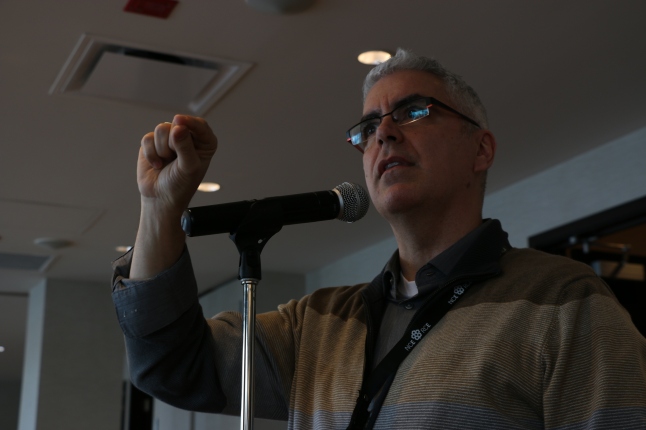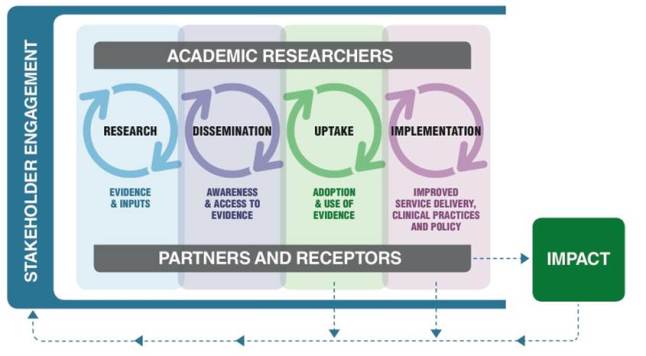By: David Phipps, KT Lead, NeuroDevNet
“If you want your research to have an influence on early childhood literacy practice you’d better not be partnering with the fire department”
On April 15 I led a workshop for the UK Association of Research Managers and Administrators. This workshop was for research administrators (university staff managing research applications among other things) who were implementing the Research Excellence Framework. The REF 2014 was a research assessment exercise that assessed both research excellence and the impacts of research. For REF impact was defined as:
“an effect on, change or benefit to the economy, society, culture, public policy or services, health, the environment or quality of life, beyond academia”
– (see page 26, REF Assessment Framework and Guidance on Submissions)
The REF officers and other research administrators interested in research impact gathered for a one day ARMA workshop to look beyond REF 2014. This included looking towards REF 2020 as well as beyond the narrowly construed REF frameworks including university research expertise (faculty and graduate students) that is engaged beyond the academy.
I used Melanie Barwick’s KT Planning Guide (click the link and enter your e-mail address to get access to the tool) as a tool to help the UK impact officers look beyond REF reporting on past impacts and start to create the conditions to enable future impacts. This planning guide asks researchers to consider 13 elements of a KT framework. Working through those 13 elements provides the raw material to then craft the KT strategy.
The KT planning guide (elements 1-3) asks the researcher to consider the types and roles of partners in the research. Partners are the individuals/organizations who are along for the ride. They are co-producers of research. They help disseminate research results. They co-supervise students. They provide cash and in-kind (space, data, populations, equipment) resources to the research project.
The KT planning guide also asks the researcher to consider types of research users (element 5). These are individuals/organizations that take up the research evidence and use that evidence to inform decisions about public policy, professional practice and social services. The NCE Secretariat calls them “receptors” or “knowledge users (KUs)”. Both partners and receptors/users are critically important to the research to impact process. The co-produced pathway to impact outlines the pathway from research to impact on the lives of children with neurodevelopmental disorders and their families. Partners collaborate throughout but receptors only become involved after dissemination.
Phipps’ Co-Produced Pathway to Impact, the evaluation framework adopted by NeuroDevNet NCE
Research partners will likely be research users but research users are not always research partners.
In the ARMA impact workshop one Impact Officer was convinced that research partners and research users were the same. After I explained the difference she remained unconvinced. That’s when I said, “If you want your research to have an influence on early childhood literacy practice you’d better not be partnering with the fire department”. Research users need to be coherent with research partners because one informs and/or has access to the other.
For NeuroDevNet’s social ABC’s intervention led by Dr. Jessica Brian from Holland Bloorview as part of the Autism Discovery Program, the research partner is Humber College which has two full-time community-based childcare settings. Humber College’s practitioners-in-training will help develop and evaluate the intervention. The knowledge users will be early childhood centres and day care centres across Canada who will put the research evidence into practice by using it to support early childhood learning. The KT Core will work with Dr. Brian and her partners help identify these receptors/KUs and broker collaborations so that Social ABC will be implemented and evaluated beyond the research project setting.
If you want the KT Core to help you find partners and receptors/users to help translate your research into early diagnosis, validated interventions and supports throughout the life span please contact the KT Core.






